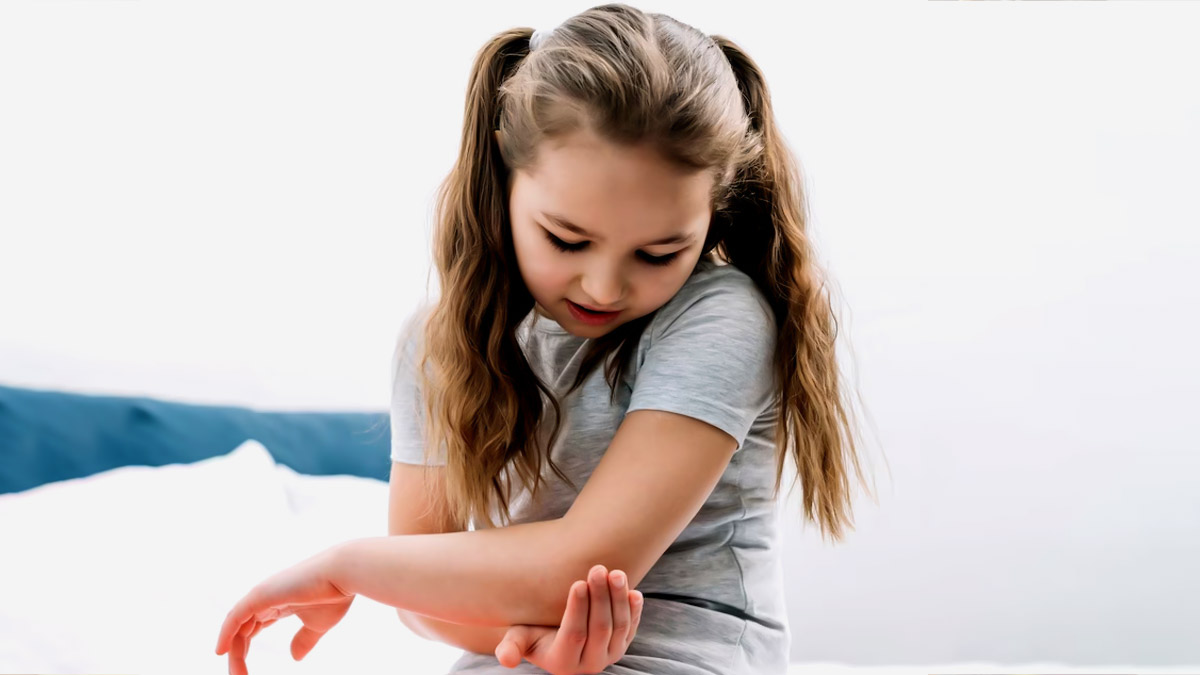
Childhood is often associated with boundless energy, laughter, and playfulness. However, for some children, these joyful moments can be marred by the challenges posed by juvenile arthritis. This condition, which involves inflammation of the joints in children, demands attention, understanding, and timely intervention. We spoke to Dr Anurag Aggarwal, Director and HOD, Orthopaedics and Joint Replacement at Marengo Asia Hospitals, Sector 16, Faridabad, who explained juvenile arthritis, its types, and the symptoms.
What is Juvenile Arthritis?

Dr Aggarwal said, “Juvenile arthritis, also known as Juvenile Idiopathic Arthritis (JIA), refers to a group of rheumatic diseases that affect children under 16. Just like in adults, arthritis in children involves joint inflammation, pain, and stiffness. However, the distinct nature of juvenile arthritis lies in its impact on young bodies that are still growing and developing.”
According to Rheumatology and Therapy, JIA stands as the prevailing chronic rheumatic ailment in childhood, holding a prominent position as a primary contributor to both short- and long-term disability.
Types of Juvenile Arthritis
There are several subtypes of juvenile arthritis, each with its own distinct characteristics:

- Oligoarticular JIA: This is the most common type, affecting fewer than five joints during the first six months of the disease. It often involves the knee and can lead to eye inflammation.
- Polyarticular JIA: This type affects five or more joints within the first six months of the disease. It often involves small joints, and some children might develop rheumatoid factor-positive polyarticular JIA, which is similar to adult rheumatoid arthritis.
- Systemic JIA: This type is characterised by fever, rash, and joint pain. It can also affect internal organs, making diagnosis challenging.
- Enthesitis-related JIA: This subtype involves inflammation where tendons and ligaments attach to bones, often affecting the spine, pelvis, and entheses.
- Psoriatic JIA: This type is characterised by both joint inflammation and the skin condition psoriasis.
Symptoms Of Juvenile Arthritis
Recognising the signs and symptoms early on can help in obtaining an accurate diagnosis and initiating prompt treatment. Dr Aggarwal listed some of the common indications as follows:

- Joint pain: Children may complain of pain or discomfort in the joints, such as the knees, ankles, wrists, or fingers. After periods of inactivity or in the morning, the discomfort could be more severe.
- Joint swelling: Swollen joints that appear larger or feel warm to the touch could be a sign of juvenile arthritis. Pay close attention to any asymmetry or swelling that lasts for more than six weeks.
- Joint stiffness: Children may experience stiffness, especially after waking up or being inactive for extended periods. This stiffness can make it challenging for them to participate in physical activities or complete daily tasks.
- Fatigue and irritability: Chronic inflammation can cause fatigue and irritability in children. They may feel tired even with adequate rest and display changes in behaviour.
- Limited mobility: Juvenile arthritis can restrict a child's range of motion, making it difficult for them to perform activities that require flexibility or coordination.
If you notice any of these symptoms persisting for an extended period, it is essential to consult a healthcare professional for a proper evaluation and diagnosis. Early intervention and treatment can help manage the symptoms and prevent long-term complications.
Also Read: Complications Due To Arthritis? Here’s How Weight Loss Can Help
How To Treat Juvenile Arthritis
Treatment for juvenile arthritis is multifaceted and tailored to the individual needs of each child.
- Medications: Nonsteroidal Anti-Inflammatory Drugs (NSAIDs), disease-modifying antirheumatic drugs (DMARDs), and in some cases, biological agents might be prescribed to manage inflammation and pain.
- Physical Therapy: Physical therapy and exercise programs can help maintain joint function, improve mobility, and strengthen muscles.
- Occupational Therapy: Occupational therapy focuses on helping children perform daily activities and tasks despite joint limitations.
- Supportive Measures: Assistive devices, such as splints or braces, can help support affected joints and improve functionality.
- Lifestyle Modifications: A healthy lifestyle, including proper nutrition, exercise, and stress management, can contribute to overall well-being.
Disclaimer
The information in this article is shared by a registered healthcare professional and is for informational purposes only, Hence, we advise you to consult with your expert for a diagnosis based on your needs and medical history.







